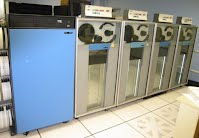
I began my career in Computer Hardware repairs, specifically with IBM equipment, at the age of 20. Of all the devices I encountered, the tape machines were always the most fascinating to me. They were a mechanical masterpiece that posed a challenging repair job. As the forefather of all Reel-To-Reel machines, their complexity was immense, and my experience in repairing them continues to be valuable even now, especially when it comes to repairing smaller audio R2R devices.
35 years later, my passion for the mechanics and sound of Reel To Reel Tapes remains strong. However, times have changed. Three decades ago, repairing these machines was a simple process that only required a few alignments. Nowadays, the process is often more complicated, as many of these machines did not age well and require extensive work to restore both their audio and optical components. Nevertheless, nothing compares to the feeling of the old tape sounds. The warm analogue touch that most of us crave is making a comeback in music production. The photo on the right shows me modifying a Revox A77 to have variable speed capabilities. This is particularly useful if you want to use it as a tape delay, similar to the old Roland space echo.”
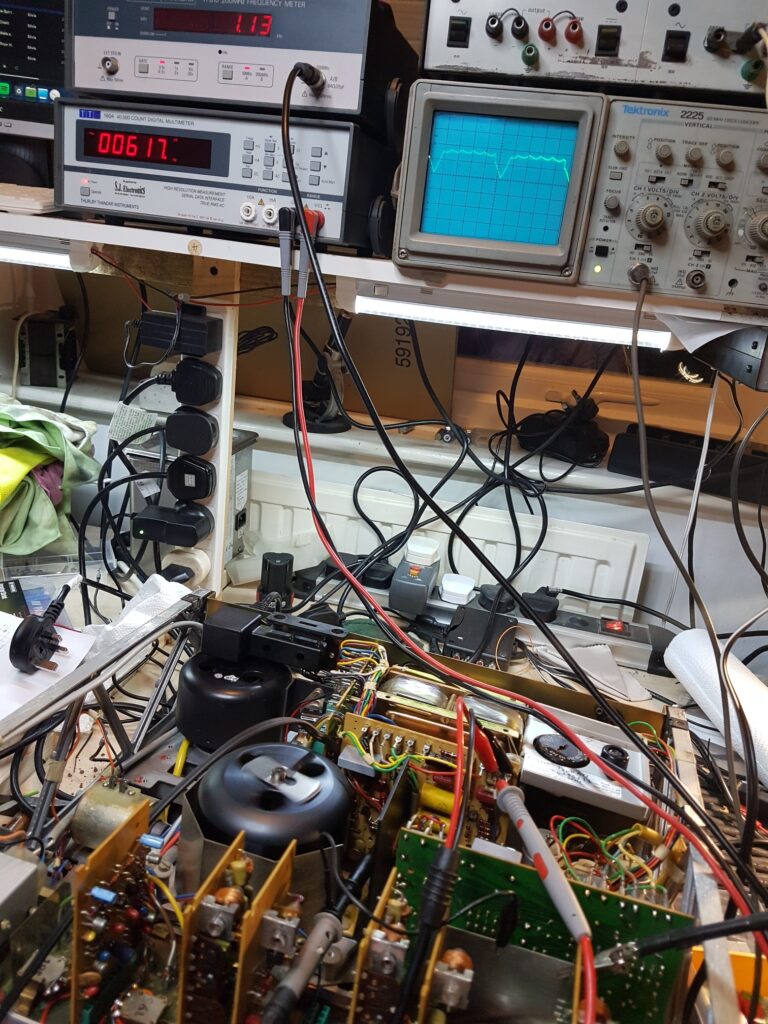
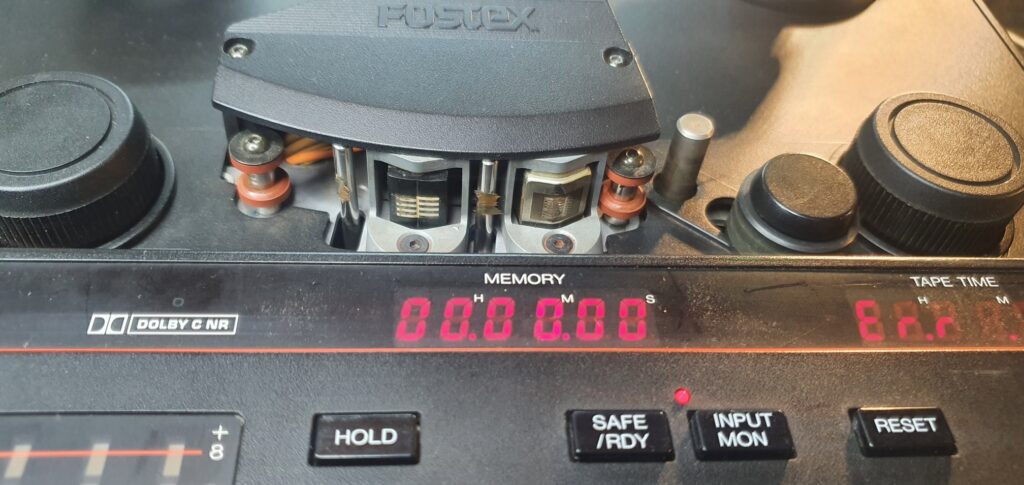
The Fostex 8-Track machine on the left will never produce a sound quality as good as new in its current condition. To achieve an acceptable sound quality, it requires a thorough cleaning and polishing of the heads. In some cases, the tape guides also need to be removed, polished, and readjusted to ensure the tape stays in its path and to avoid drop outs.
Checking the tension of a belt can be a important task when dealing with old and worn-out belts. Sometimes they can disintegrate and leave a pile of black tar that is difficult to remove from the surface, making the job dirty and potentially ruin your clothes.
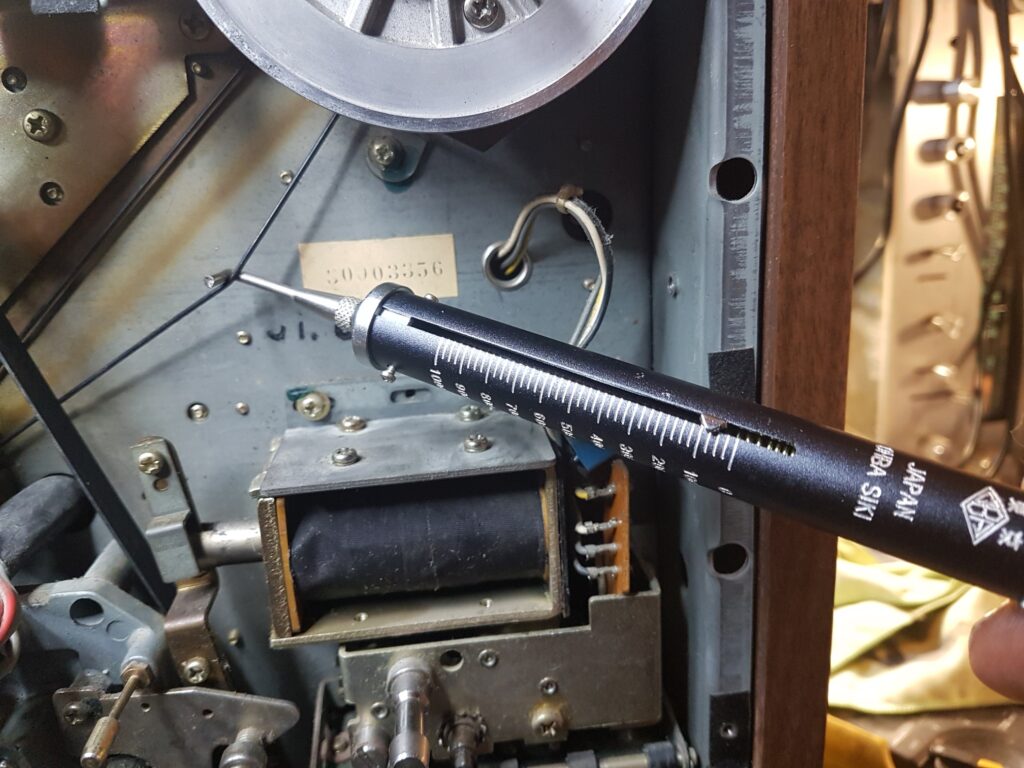
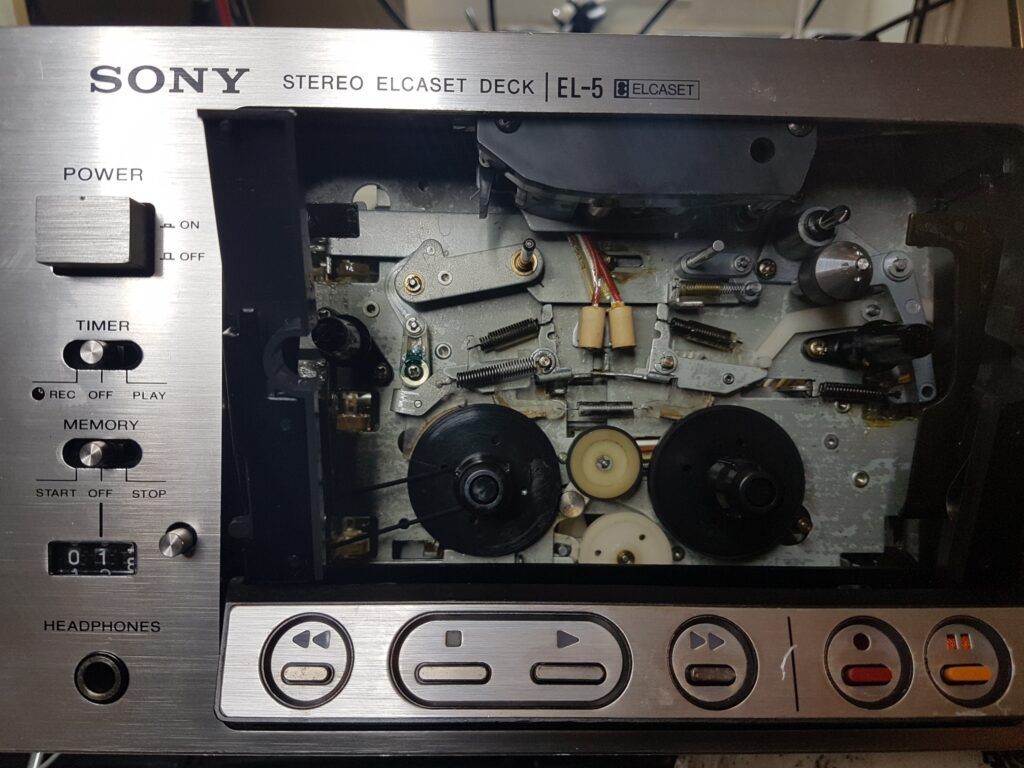
The Inside of a Elcaset tape that was developed by Sony in 1976 and was designed to offer high-quality audio recordings that were superior to those of traditional cassette tapes. Elcaset tapes were larger than standard cassette tapes and featured a wider track width, allowing for better frequency response and dynamic range.
Elcaset tapes were also capable of recording up to 120 minutes of audio per side, which was significantly longer than the typical 30-45 minutes of cassette tapes. However, due to their larger size and the fact that they required a special player, Elcaset tapes did not gain widespread popularity and were ultimately discontinued in the early 1980s.
Adjusting a Tascam ATR 60 with 16 channels and 15 adjustments was quite a laborious task, but some of these machines are still in use in studios today. The challenge lies in obtaining well-functioning tapes and ensuring that the tape path is kept clean, which is now even more critical than during the peak of analogue recording.
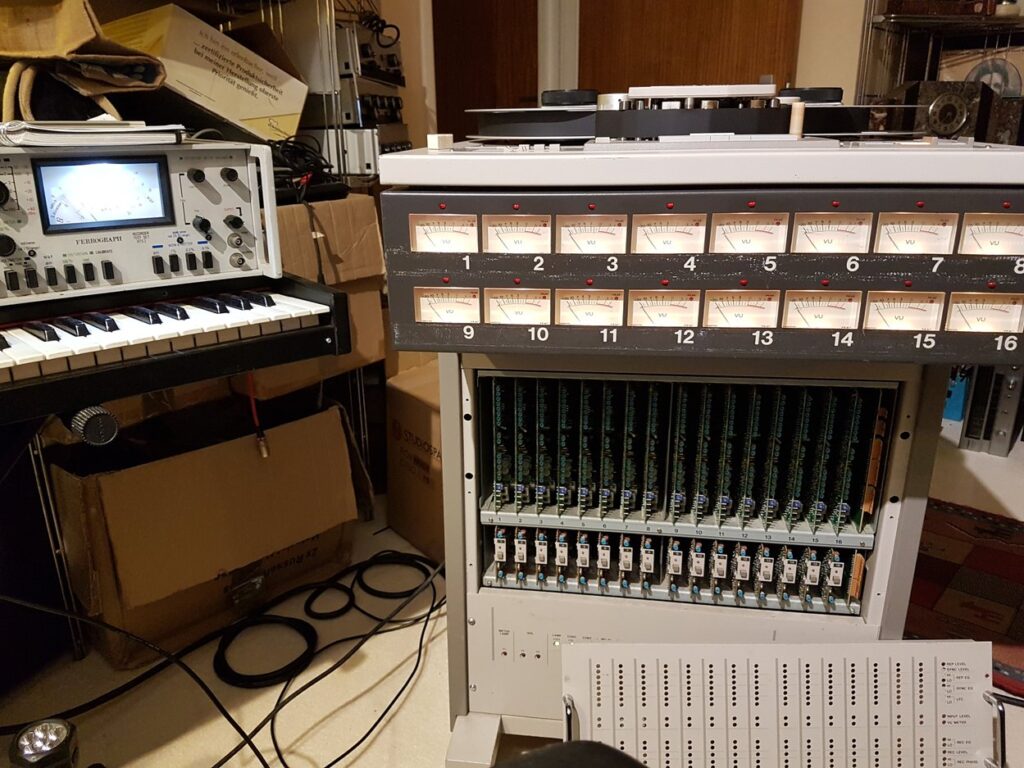
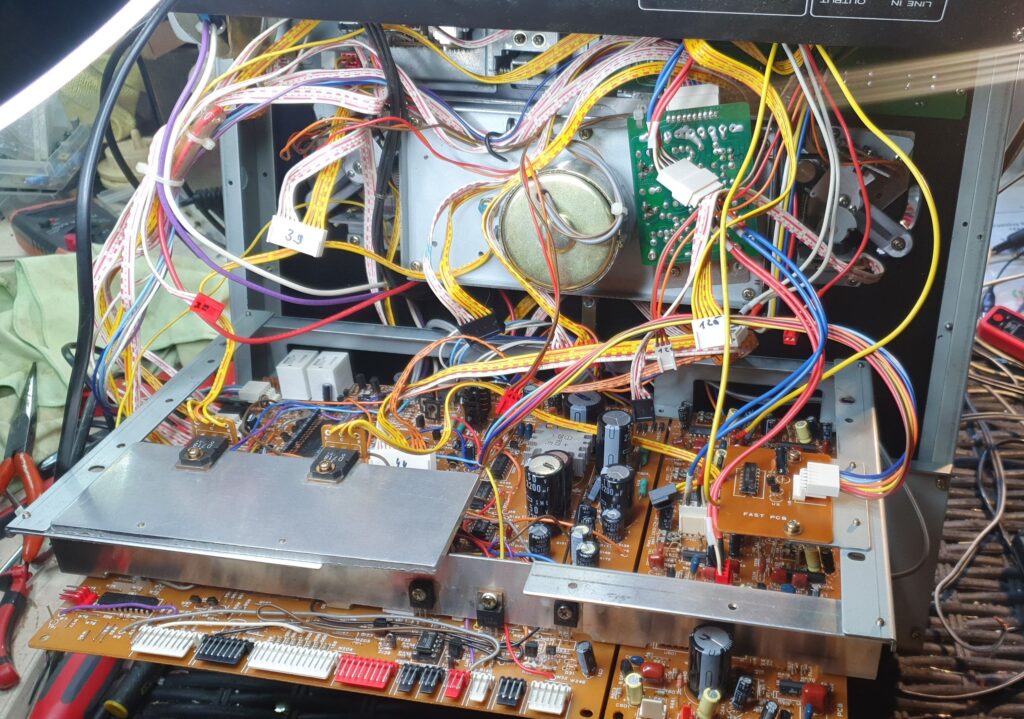
Take a look inside a Tascam X2000R, a durable machine that has been around for over a decade, but never gained much recognition in the professional sector. Despite its durability, the machine’s internals can be messier than what you would find in a typical workshop, which can lead to higher repair costs.
Contact me today to learn more about our services and to discuss your restoration needs.